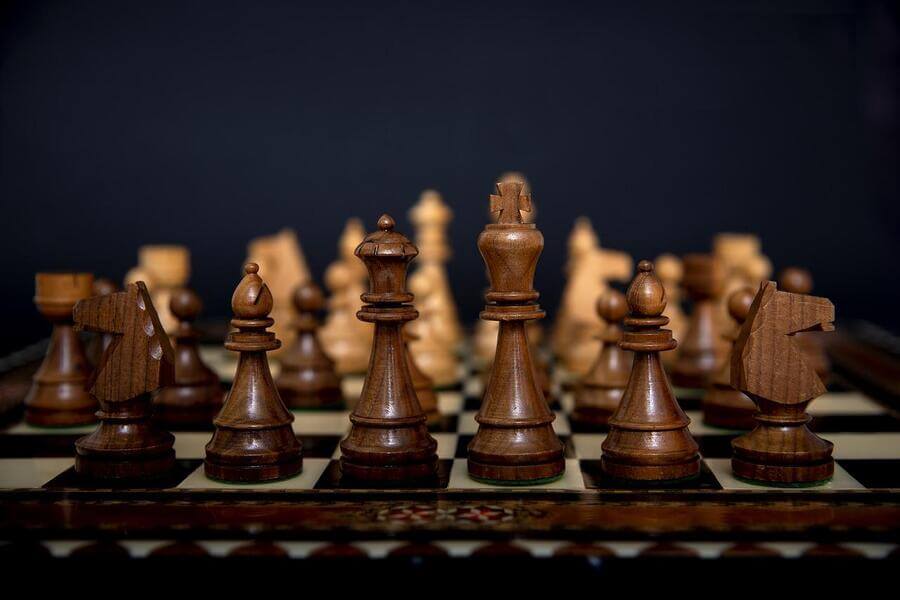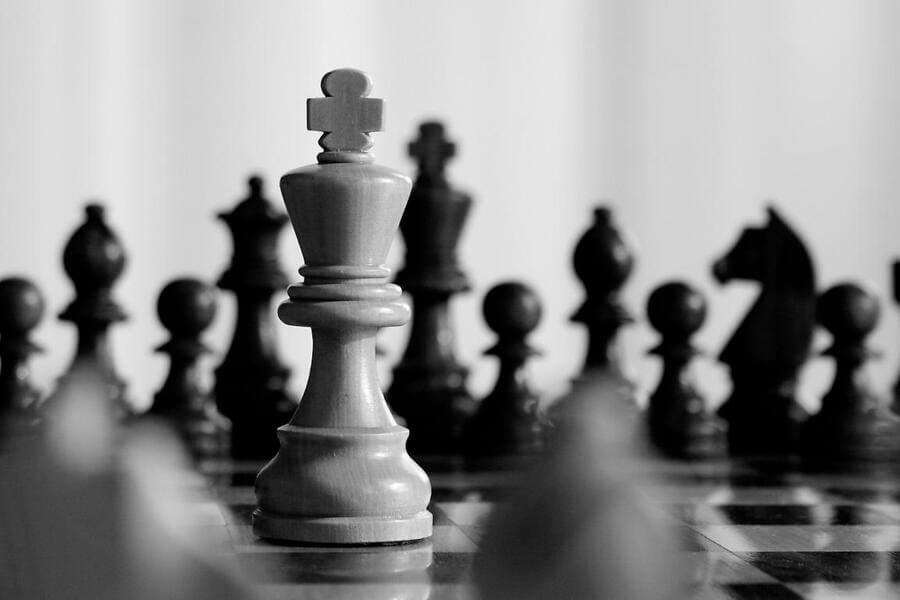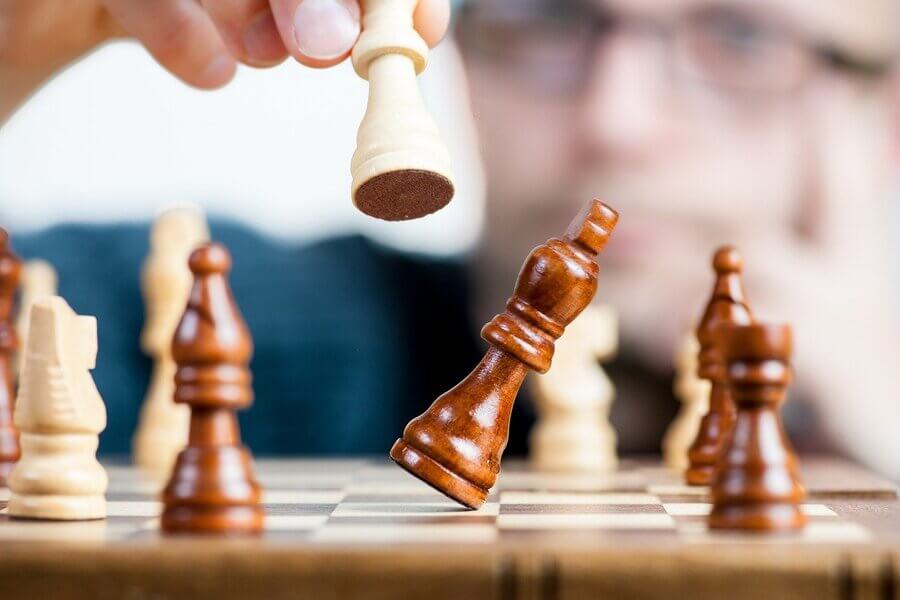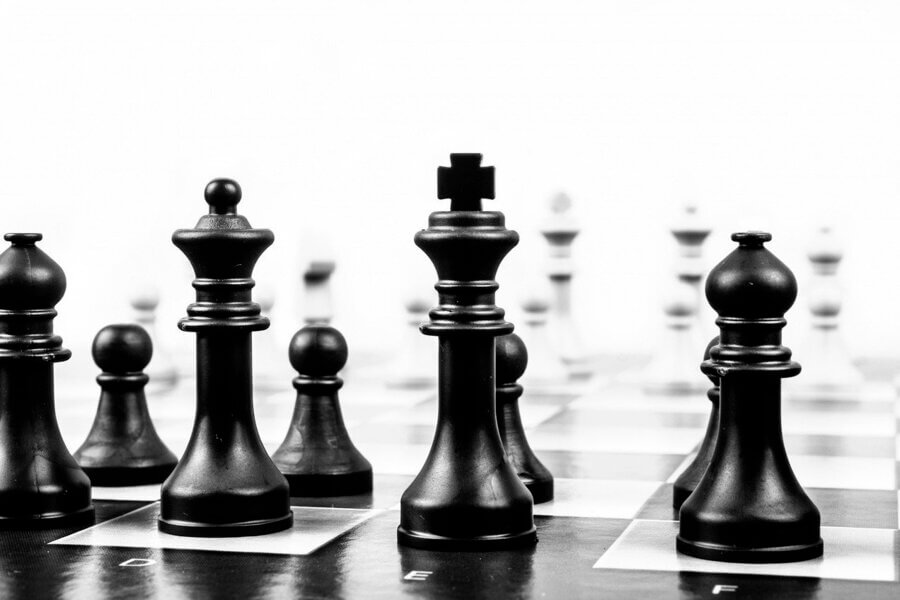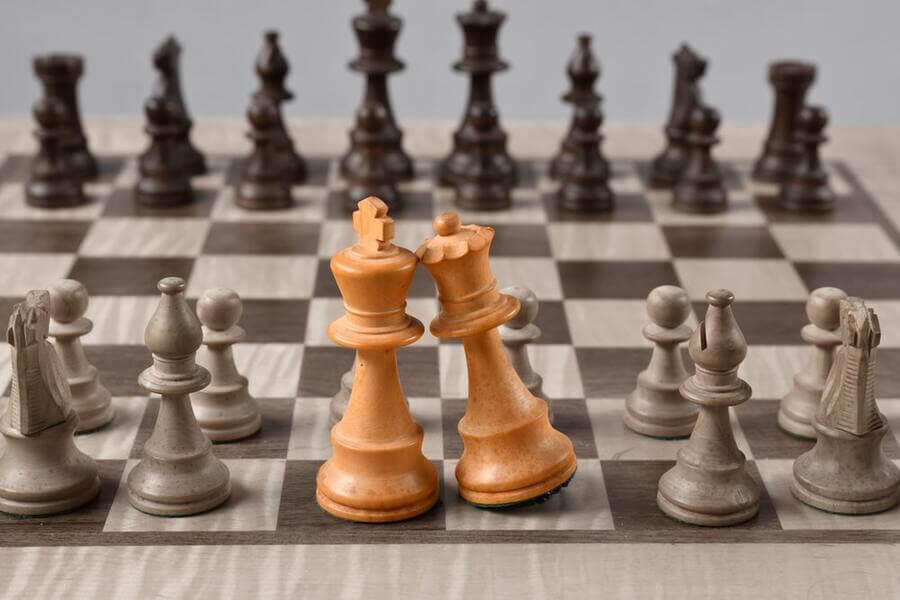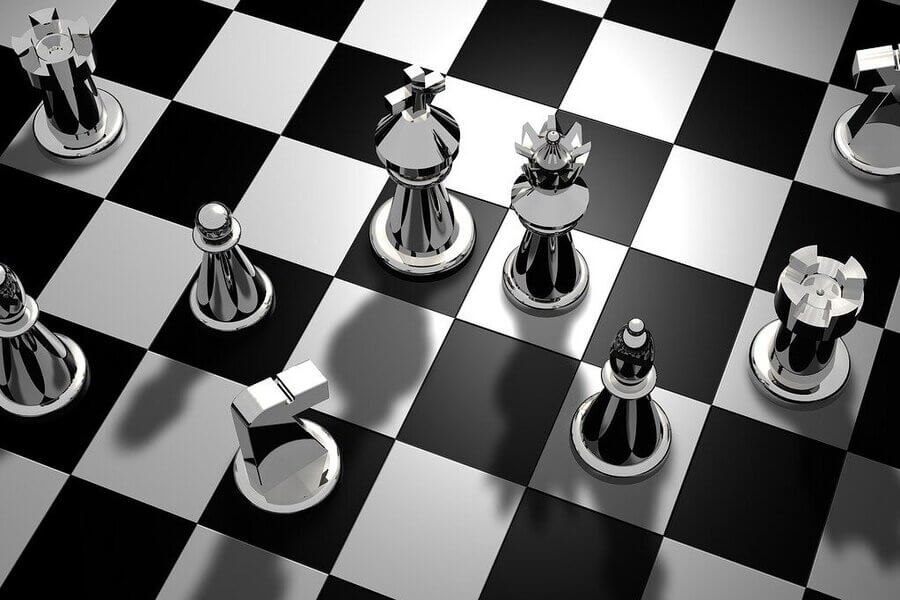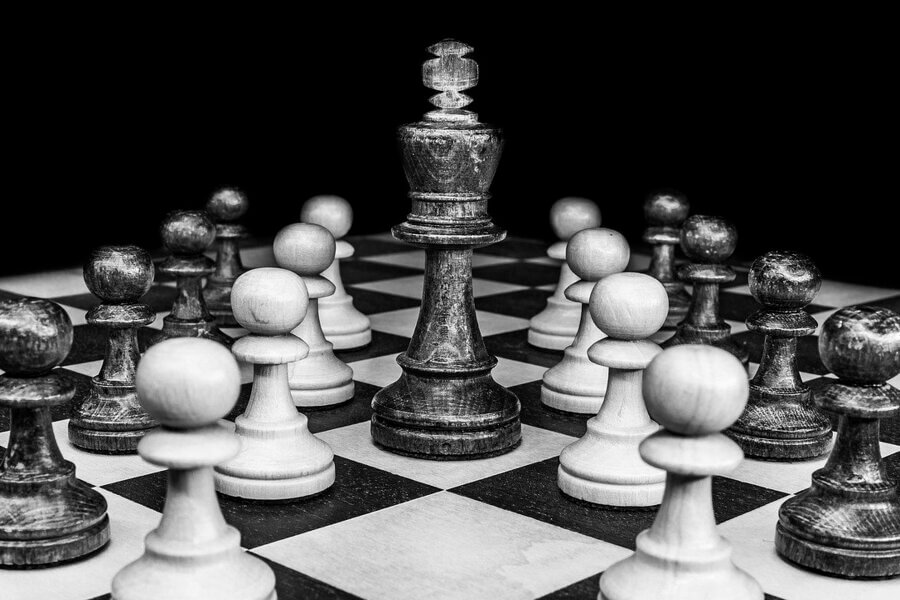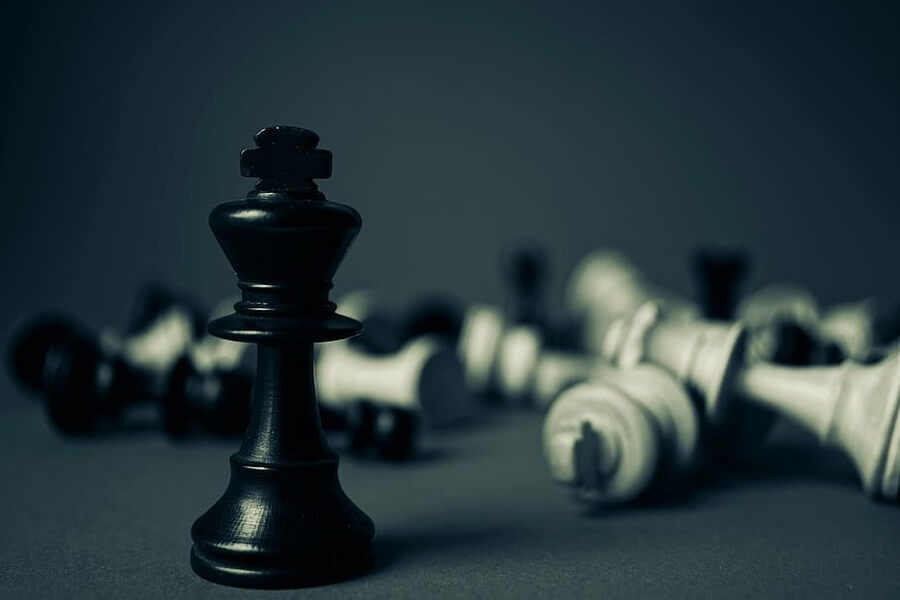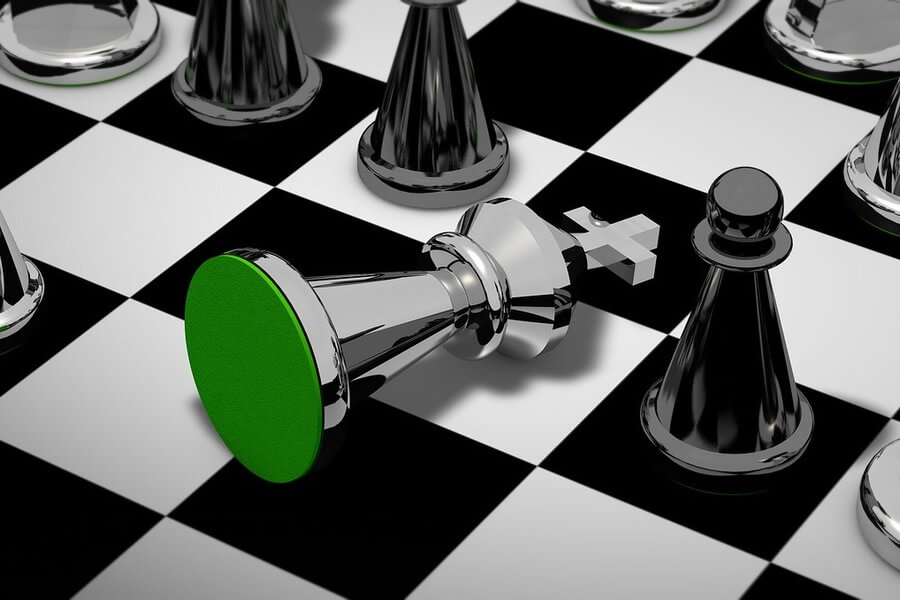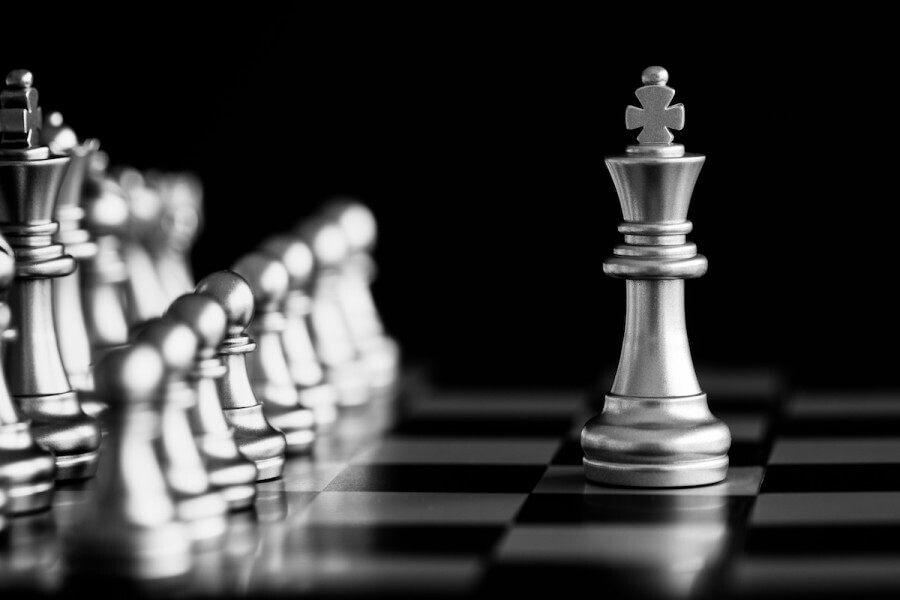No products in the cart.
Chess Rules & Instructions
Chess King: How To Move And Play King Effectively In Chess
The king is the most crucial chess piece even if it is not the strongest. The game ends when a king is checkmated! Finding ways to keep your king safe while endangering your opponent’s is at the heart of every chess strategy.
Table of Contents
King Chess Piece
The king always starts play on the e-file, which is the side of the board where the opponent’s king is located. Black starts on e1 and white on e8. You’ll see that the king likewise starts on a square with the color opposite to its own. As contrast to the queenside, the side of the board where the king is located is sometimes referred to as the kingside.
The king is the chess piece that stands the highest in luxury chess sets. Unlike other pieces whose values can be converted into points (pawn for 1, bishop and knight for 3, rook for 5 and queen for 9), the king is priceless. Why? Because if it is threatened with no way out, then you lose the chess game!
How King Moves In Chess
The king may travel in any direction, just like the queen. However, it is restricted to moving only one tile at a time. The king may appear to be one of the more adaptable chess pieces because of this, but there is a significant exception: The king is never permitted to move into a square that is being assaulted by an opponent’s piece. That means, the king cannot move into check.
The king is not particularly powerful since he travels so slowly. He is unable to flee the enemies swiftly, therefore he must rely on his devoted troops to defend him.
King And Check In Chess
When a king is in a square that is being assaulted by an enemy piece and is about to be captured on the following move, it is said to be in check. A king cannot go into check (doing so is against the rules), and once a king is in check, it must leave check.
There are three ways for the king piece to escape restraint:
- Remove the king from check.
- Use a different piece to block the check.
- Capture the piece that puts the king in check.
When a king is under check and none of these options are effective, then it is called checkmate and the game ends.
King Strategies In Chess
Due to its position and weakness, the king is likely to spend a significant amount of the game in the rear ranks. It could appear like the king doesn’t accomplish much if you’re just beginning to play chess or are still in the early stages of your chess training. Having said that, as the game progresses, the chess king’s function could change.
King Piece In Chess Openings
The king’s protection is the top concern in the early game. Ignoring the king might compel you to make sacrifices or cause a swift attack to cause progress to be delayed. The Scholar’s Mate is a good illustration of what might occur to an undefended king.
King Piece In Chess Middlegames
An aggressive chess player will use a variety of chess strategies to attack the king during the middlegame. Protecting your own king while posing a danger to your opponent’s will be much easier if you have a rudimentary understanding of pawn structure, skewers, and pins.
King Piece In Chess Endgames
The king’s role in the game might drastically shift towards the finale. By this time, the other valuable pieces have been removed from the board to a large extent, reducing the dangers to the king and allowing both players more opportunity to maneuver. The king can not only develop into a potent offensive piece when it comes to controlling the center, but it can also help promote pawns by watching over them as they move down their files.
How To Win King vs King In Chess
When one king marches in and takes several pawns in a pawn endgame, the outcome of the conflict is frequently decided. Even when the other king attempts to prevent it, a king occasionally has the power to accomplish this. He manages to push his way inside. When kings battle one another, they often employ two strategies: opposition or outflanking.
When the kings are on the same line with a blank square between them, there is opposition. If the other king has to move, you have opposition. You can manage the situation because of the resistance. The other king concedes to you when he moves. It resembles a contest to see which king is more powerful. Your king can move forward if the opposing king retreats. You can choose whether to outflank by going around him, or opposite by blocking him from progressing if he moves to the side.
Frequently Asked Questions About King Chess Piece
Can You Win Chess With Just A King?
Consider a scenario in which all of your pieces on the chessboard have been eliminated, leaving only your king. So, is it possible to succeed in chess using only a king?
With just a king, it is impossible to win at chess. A single king is unable to checkmate another king since it is against the rules and would result in capture on the following move. A player with a naked king can only accomplish a draw if his opponent exceeds the time limit, reaches a deadlock, or leaves both players with bare kings.
Can A King Kill A King In Chess?
It is forbidden for a king to capture another king. In reality, both players have engaged in an illegal action, and the arbiter should be called right once to prevent the situation from getting out of hand.
Illegal actions taken:
- The first player committed a foul by putting his king on a square where an adversary piece might capture him (the opponent king).
- The second player should have pointed out the improper move or summoned the arbiter, but instead he captured the opposing king and played illegally.
Why Does King Have A Cross?
In chess, the king wears a cross on his head to represent the Christian foundation of the monarchy. Given the Staunton set’s symbolic significance, the inclusion of the cross on the king also aided in differentiating it from the queen.
The cross-frippery on the king, which was by far the largest Staunton piece, was not absolutely necessary for identification, but it also allowed for the otherwise ludicrous echoes atop the queen and bishop, which are nearly impossible to recreate.


